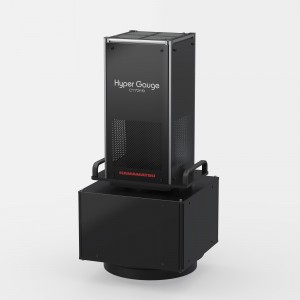
Looking back over the past 20 years, the greatest influence on my career has been Metcalfe’s Law - “The value of a telecommunications network is proportional to the square of the number of connected users of the system.” Think about it - the value of networking! While Ethernet has always been my focus when bringing up Metcalfe’s Law, it is a simple exercise to expand this concept beyond networks and apply it to our professional lives – and understand its true significance. Considering the multitude of individuals, companies, standards organizations, consortiums, MSA’s, and marketing alliances making up today’s networking world, the need for and importance of human networking cannot be underestimated, and is, in fact, growing.
Networking and expanding awareness
This has been rolling around in my head ever since I attended EPIC’s Annual General Meeting this past April in Scotland. As a first-time attendee, I was truly impressed by the collaborative environment that the EPIC team so obviously strives to foster between its members. When I was asked to be a consultant to EPIC, I jumped at the opportunity, as I saw this as a way to expand the optic community’s awareness of related optical Ethernet standardization efforts and new application spaces that might leverage other optical technologies.
The proverbial rocket ride
Keep in mind that throughout the past decade, the pace of development within the IEEE 802.3 Ethernet Working Group has led to a wide array of Ethernet solutions and speeds. The simplest way to illustrate this is to highlight that the introduction of Ethernet’s first six rates, ranging from 10 Mb/s to 100 Gb/s (with the inclusion of 40 Gb/s), occurred over approximately 30 years, while the introduction of 2.5 Gb/s, 5 Gb/s, 25Gb/s, 50 Gb/s, 200 Gb/s, and 400 Gb/s standards occurred over the past 5 years of this decade. Furthermore, while Ethernet’s most successful project is arguably the 1000 BASE-T project, which defined Gigabit Ethernet across unshielded twisted pair cabling, today’s Ethernet specifications address a multitude of interconnects. There are Ethernet specifications addressing multiple types of media from the copper traces on PCBs interconnecting integrated circuits and optical modules, to copper twin-axial and unshielded twisted pair, to optical cables ranging from tens of meters to ten’s of thousands of km. The evolution of Ethernet this decade in terms of speeds, media, and applications has been a proverbial rocket ride.
The blazing pace appears ready to continue, as two new MSA’s have been announced over the past month targeting 800Gb/s: the 800G Pluggable MSA and the QSFP-DD800 MSA Group. In addition, use of on-board optics for 800Gb/s is being increasingly mentioned. While there are no efforts currently underway within the IEEE 802.3 Ethernet Working Group, there will be an initial discussion of “Beyond 400GbE” at the upcoming IEEE 802 Nov Plenary within the IEEE 802.3 New Ethernet Applications Ad hoc. This should be an interesting discussion, as there has already been some debate about what the next rate should be: 800GbE or 1.6TbE.
There appears to be some debate as to whether an 800 Gb/s capacity module should drive the need for a new 800Gb/s Ethernet standard. Given past deployments it is easy to understand how a module with 800 Gb/s capacity could be used in a break-out solution for higher density 100GbE, 200GbE, and 400GbE deployments. Furthermore, while some see 800GbE as being easily achievable, given recent investments in 100 Gb/s signaling, while others see it as too small a step, and argue for 1.6TbE. However, if we step back, and consider that high volume deployments of Ethernet solutions have followed the introduction of a 4 lane wide solution, it becomes obvious that regardless of whether the next rate of Ethernet is 800GbE or 1.6TbE, the industry will need to evolve past 100 Gb/s signaling.
Written by John D’Ambrosia,Advisor, EPIC and Distinguished Engineer, Futurewei































 Back to Blog
Back to Blog



























